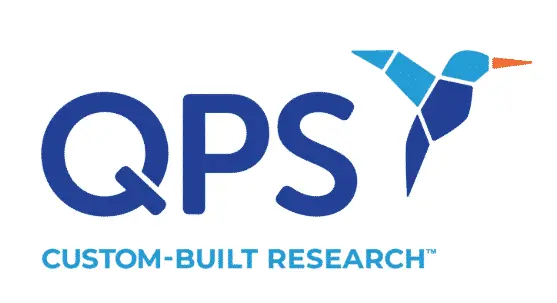Introduction
Changes in how clinical trials are managed in the European Union (EU), mandated by the European Union Clinical Trial Regulation 536/2014 (EU CTR), have important implications for clinical trial sponsors. The EU CTR impacts clinical trials in all 30 EU and European Economic Area (EEA) countries, replacing the EU Clinical Trials Directive 2001/20/EC (EU CTD) in this region. The EU CTR establishes a unified approach to clinical trial applications, assessment and reporting. It also enhances transparency and safety for clinical trial participants. A key feature of the EU CTR is the Clinical Trial Information System (CTIS), a central electronic hub for all clinical trial application submissions and communications. The system for managing clinical trials in the European Union (EU) is changing. By January 31, 2025, all ongoing clinical trials must move to the Clinical Trials Information System (CTIS). This date will mark the end of a three year transition period, which started when the EU Clinical Trial Regulation 536/2014 (EU-CTR)1 became effective on January 31, 2022.
This white paper will review important aspects of the new system, CTIS structure and functions, how to handle the transition of ongoing clinical trials and new trial applications, potential challenges for clinical trial sponsors and recommendations on how sponsors can prepare to keep their clinical trials on track.
Benefits Of The Eu 536/2014
The new regulations are designed to simplify and streamline the clinical trial approval and management process in the EU and European Economic Area (EEA) and overcome limitations and challenges associated with the EU Clinical Trial Directive 2001/20/EC (EU-CTD), which has governed clinical trials since 2004. Under EU-CTR, the CTIS functions as the sole point of entry for submitting clinical trial information and the primary resource for communication, offering the following advantages:
Streamlined Process
Previously, clinical trial sponsors had to submit a separate clinical trial application (CTA) to each country’s authorities and ethics committees to gain regulatory approval for a trial. Now, sponsors can use the CTIS to submit a single online application for authorization to run a clinical trial in up to 30 EEA countries.
Information Sharing
The CTIS facilitates communication between sponsors, EU member states, EEA countries and the European Commission. The system also makes it more efficient for member states to coordinate when evaluating applications and deciding whether to authorize clinical trials.
Increased Transparency
The CTIS offers a searchable public website that allows anyone to research clinical trials conducted in the EEA. Data and documents submitted through CTIS will be publicly available for authorized or refused trials on a standardized timeline. The sponsor’s commercially confidential information and personal data are redacted and not publicly available.
Increased Safety
The EU-CTR significantly enhances patient safety within clinical trials by imposing more detailed guidelines for informed consent and adverse event reporting.
Timeline Of Transition
- From January 31, 2022, to January 31, 2023: Sponsors had the option to submit clinical trials under the legal framework of EU-CTD or EU-CTR.
- Starting January 31, 2023: All CTAs are subject to EU-CTR. Trials approved under EU-CTD before January 31, 2023 can continue to be regulated under EU-CTD until January 31, 2025.
- January 31, 2025, and beyond: All clinical trials will be regulated under EU-CTR and all ongoing clinical trials in the EU must be transitioned to CTIS.
Authorities plan to review the EU-CTR every five years to ensure it achieves its intended results.

Using CTIS: Structure And Functions
Clinical trial sponsors use the CTIS for clinical trial submissions and communications with regulatory authorities, including receiving and responding to requests for information (RFIs). CTIS also has a searchable public website component.
CTIS was created with the following key structures, functions and responsibilities:
Secure Workspaces for Sponsors and Regulators
The CTIS offers secure and tailored workspaces for sponsors and regulators. Sponsors have access to dedicated areas within the system where they can submit, manage and monitor their trial applications. These workspaces enable sponsors to collaborate with regulators, upload required documentation and track the progress of their applications in real time.
Regulators can also access secure environments to review and assess trial applications, communicate with sponsors and oversee compliance with regulatory requirements. By segregating workspaces based on user roles and permissions, CTIS ensures that sensitive trial- related information remains accessible only to authorized individuals, thus safeguarding data privacy and security.
Key Workspace Functions
CTIS application management features enable sponsors to submit new trial applications, amend existing ones and report trial results within a standardized framework. User roles and permissions within CTIS allow stakeholders to perform specific tasks based on their responsibilities and expertise. Additionally, CTIS allows sponsors and regulators to generate customized reports on trial status, compliance metrics and safety outcomes for internal and external stakeholders.
Organization-Centric vs. Trial-Centric Approaches
CTIS supports both organization-centric and trial- centric approaches to clinical trial management. In an organization-centric approach, which is designed for larger sponsors operating multiple simultaneous trials, sponsors manage information within a unified workspace, allowing for a high-level administrator to have centralized oversight and allocate resources appropriately.
Alternatively, a trial centric approach is designed for smaller sponsors operating fewer trials. In this model, each trial is treated as a distinct entity with its own workspace and a dedicated administrator. This allows the sponsor to tailor management activities to individual trials’ specific needs and requirements. CTIS accommodates both approaches by providing customizable workflows, data structures and collaboration tools that can be adapted to suit the organizational context and trial complexity.
General Data Protection Regulation Sponsor Obligations
Under the General Data Protection Regulation (GDPR), sponsors are required to obtain explicit consent from trial participants for the processing of their personal data and to implement appropriate technical and organizational measures to safeguard data integrity and confidentiality. The EMA, the European Commission, Member States, clinical trial sponsors and marketing authorization holders share responsibilities for personal data and are considered joint controllers of data in the CTIS.
Transition Of Ongoing Clinical Trials
Under the EMA’s guidelines2 for transitioning ongoing clinical trials from the EU Drug Regulating Authorities Clinical Trials Database (EudraCT) to CTIS, sponsors must receive authorization via CTIS before January 30, 2025. The following criteria specify which trials must be transitioned:
Sponsors must transition a trial from EudraCT to CTIS if at least one of the following is true:
- The EudraCT trial is going to be conducted in additional EU/EEA member state(s) to which a EudraCT CTA was not submitted before January 31, 2023 (this is considered a new trial application for this member state)
- The EudraCT trial completion date is expected to be after January 30, 2025
-
In addition, only trials that meet the following criteria can be transitioned:
- Interventional clinical trials in humans
– The trial is still ongoing in at least one site in the EU/EEA
– The trial is not on hold
– No notification has been submitted regarding whether the trial has ended in the EU/EEA
From EudraCT to CTIS
To begin the transition process, the sponsor submits an initial CTA and indicates via a checkbox that the trial is transitional. Checking the box allows users to add information about the trial being transitioned from the EudraCT, complete the CTIS application and upload relevant documents. Automated data migration from EudraCT to CTIS is not possible.
The evaluation process then proceeds through the same validation, assessment and decision phases required for an initial CTA. The validation phase includes selecting the reporting member state (RMS), which is the entity that will coordinate the assessment of the CTA. Member state(s) concerned (MSC) are member states other than the RMS to whom the clinical trial application is filed.
When transitioning to a multinational clinical trial, all Part I assessment documents must be harmonized or consolidated across all MSCs. Failing to do so will require submitting and approving an amendment under the existing EU CTD before transitioning.
- Part I Documentation: the latest authorized harmonized/consolidated versions of the following documents must be provided: the trial protocol, cover letter, investigator’s brochure (IB), investigational medicinal product dossier (IMPD), good manufacturing practices (GMP) documents and labels, redactions and translations.
- Part II Documentation: the latest approved versions of the following documents must be submitted for ethical review: trial site information, recruitment arrangements, informed consent form (ICF), suitability of investigator, suitability of facilities, financial arrangements and GDPR documentation.
For more information on transitioning existing CTAs, see How to Get Started and How to Transition a Trial.3

New Clinical Trial Application Submission Process
When a new CTA is submitted to CTIS, RMS selection is step one and occurs concurrently with the validation phase. The CTA then proceeds through the assessment and decision phases, each with specific timelines. If sponsors do not meet certain deadlines, the application will lapse and need to be resubmitted.
Validation and Assessment
When a clinical trial is submitted to multiple member states, the relevant member states jointly execute the Part I assessment. One member state is selected as the RMS, which assesses the Part I dossier in collaboration with the other member states. The Part I approval is then available to all concerned member states. The Part II dossier is assessed individually by each member state. The Part II approval applies to all participating sites within the member state.
Sponsors may submit Part I and Part II documentation sequentially or in parallel. For a trial in multiple member states, sponsors may submit Part I to all member states and Part II to some member states. Under the sequential approach, sponsors must submit Part II within two years of Part I approval.
The EU-CTR introduced a new stricter timeline of 12 calendar days for sponsors to respond to RFIs and provide updated, relevant documentation in the CTIS. To meet this requirement, sponsors may need to upload documents showing tracked changes and/or redactions and translations. Otherwise, applications will lapse by default. It should be noted that CTIS follows an EU clock, and therefore, the EU end of the day for a deadline should be taken into consideration.
Third-Party Considerations
The CTIS does not allow reference to third-party IMPDs or technical data, and there is no option to cross reference drug master files held by third parties for comparator or combination IMPD protocols. When the clinical trial sponsor is not the product owner, the sponsor may have access to the IMPD Quality (IMPD-Q). In this case, the product owner must submit an IMPD-Q-only application concurrently with the initial CTA.
However, cross referencing other clinical trials in CTIS is possible. For example, a parent study can be cross- referenced if all the countries involved in the new study were also part of the parent study.
Post-Decision Modifications
A Substantial Modification CTA4 (SMCTA) is an application to change any aspect of the clinical trial after the decision on an application has been posted. Like the other types of applications, an SMCTA proceeds through the validation and assessment phases according to prescribed timelines.
Responding to Requests for Information
Reviewing authorities may request information from trial sponsors during the application’s evaluation.
As per the CTR, request for information (RFI) response time is limited and contingent on the stage when it’s raised:
- Ten days to respond to RFIs raised during the validation of an application
- Twelve days to respond to RFIs raised during Part I and/or Part II assessment
Challenges and Recommendations
Complying with the EU CTR poses several challenges for sponsors, which may include:
- Accelerated response timelines: The EU-CTR limits sponsors to shorter timeframes for responding to application queries or RFIs.
- Transitioning existing trials: Moving ongoing trials to the CTIS can be complex and time consuming, requiring careful planning and execution.
- Technical challenges: Implementing and navigating the CTIS platform may present technical hurdles for
sponsors, such as data entry, system integration and troubleshooting.
Recommendations
To navigate the transition and ensure compliance, sponsors should consider the following recommendations:
- Conduct impact evaluations: Assess the potential impact of EU CTR requirements on current operations and workflows and develop strategies and systems to address any challenges or gaps.
- Update operations and training: Sponsors should update standard operating procedures, workflows and training materials. Staff members responsible for using CTIS should receive comprehensive training to ensure they are proficient in navigating the platform and fulfilling regulatory obligations.
- Dedicate resources: Identify departments or
personnel responsible for collecting and submitting data into CTIS on an ongoing basis. Ensure processes and subject matter experts (SMEs) are in place and available to respond to RFIs in the designated timelines.
Conclusion
The transition to EU CTR represents a significant shift in the EU clinical trial landscape. While it presents challenges for sponsors, it also offers opportunities to streamline processes and enhance transparency. By preparing effectively and embracing change, sponsors can navigate the transition successfully and contribute to the advancement of clinical research in Europe.
QPS Solutions and Services
As a reliable and experienced clinical trial partner, QPS can support sponsors throughout the transition. Our experts can help with many essential transition responsibilities, including the following:
- Strategic regulatory planning
- Training on CTIS and drafting of standard operating procedures to support CTIS management
- CTIS submissions and CTA management, including amendments, substantial modifications, annual reports and the reporting of study results
- CTIS transition services
- Redaction and translation services
If you have questions or concerns about the impact of EU-CTR, contact the regulatory experts at QPS. We are here to help.
REFERENCES
- Clinical Trials Regulation. (2024). https://www.ema.europa.eu/en/human-regulatory-overview/research-development/clinical-trials-human-medicines/clinical-trials-regulation
- European Medicines Agency. (2023). Quick guide: Transitional trials from EudraCT to CTIS (authority users). CTIS Training Programme – Module 23 https://www.ema.europa.eu/system/files/documents/other/cttm23_-_quick_guide_ms_en.pdf
- European Medicines Agency. (January 23, 2024). Clinical Trial Information System (CTIS). How to get started and how to transition a trial. https:// euclinicaltrials.eu/documents/20482/2813837/CTIS%20how%20to%20get%20started%20and%20how%20to%20transition%20a%20trial.pdf/ CTIS%20how%20to%20get%20started%20and%20how%20to%20transition%20a%20trial.pdf
- European Medicines Agency (February 2024). CTIS Evaluation Timelines: CTIS Training Programme. https://www.ema.europa.eu/en/documents/other/
clinical-trial-information-system-ctis-evaluation-timelines_en.pdf





